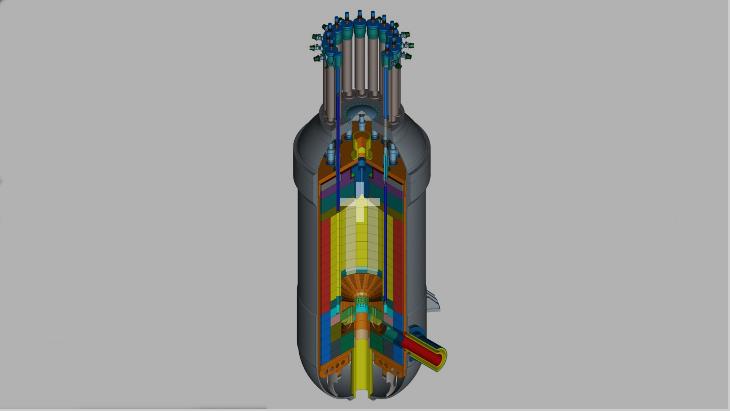The reactor is the Pretoria-developed HTMR-100 which produces 100 MW of heat and 35 MW of electricity and which is derived from the South African Pebble Bed Modular Reactor (PBMR) programme, which was to have been a small-scale high-temperature reactor using graphite-coated spherical uranium oxycarbide tristructural isotropic (TRISO) fuel, with helium as the coolant, able to supply process heat as well as generating electricity. South Africa had been working on the PBMR project since 1993, however, in 2010 the government formally announced its decision no longer to invest in the project, which was then placed under 'care and maintenance' to protect its intellectual property and assets.
Chairman and CEO of Stratek Global, Kelvin Kemm, a former chairman of the South African Nuclear Energy Corporation, told World Nuclear News last year that thanks to the experience and legacy of the PBMR programme - which was at the start of the pilot plant stage when it was paused - the aim was to have a first HTMR-100 plant built within five years.
The new partnership follows what Stephen Edkins, head of CleanTech at tech consultancy Koya Capital, told Biznews was a period of due diligence which has convinced them of the potential of the technology and they will now work to ensure Stratek Global's project is investor-ready, and to recommend the project to its investors, with a "strong commitment to break ground before the end of the year".
Edkins added: "This collaboration transcends mere reactor construction, it is about establishing a benchmark in clean, dependable energy for Africa and the wider world, and we are thus excited to work alongside Stratek Global in this innovative endeavour. There is a growing realisation that nuclear energy is the best way to address the substantial demand for clean base-load power in Africa and around the world."
Stratek stresses the low cooling-water needs - which vastly increases the numbers of potential sites in Africa and elsewhere - and the reactor's ability to power, for example, a remote mine and community without requiring long-distance power distribution network lines. Differences between the PBMR and the HTMR-100 include the gas outlet temperature being reduced from 940°C to 750°C, and, while the PBMR used a direct helium cycle through the reactor and into the turbines, the HTMR-100 instead takes the heat into a water heat exchanger or steam generator, which produces steam for conventional steam turbines or process heat. This means all the equipment downstream of the heat exchanger can be purchased off-the-shelf, reducing design time and costs.





_30199.jpg)
_72306.jpg)

_49562.jpg)





